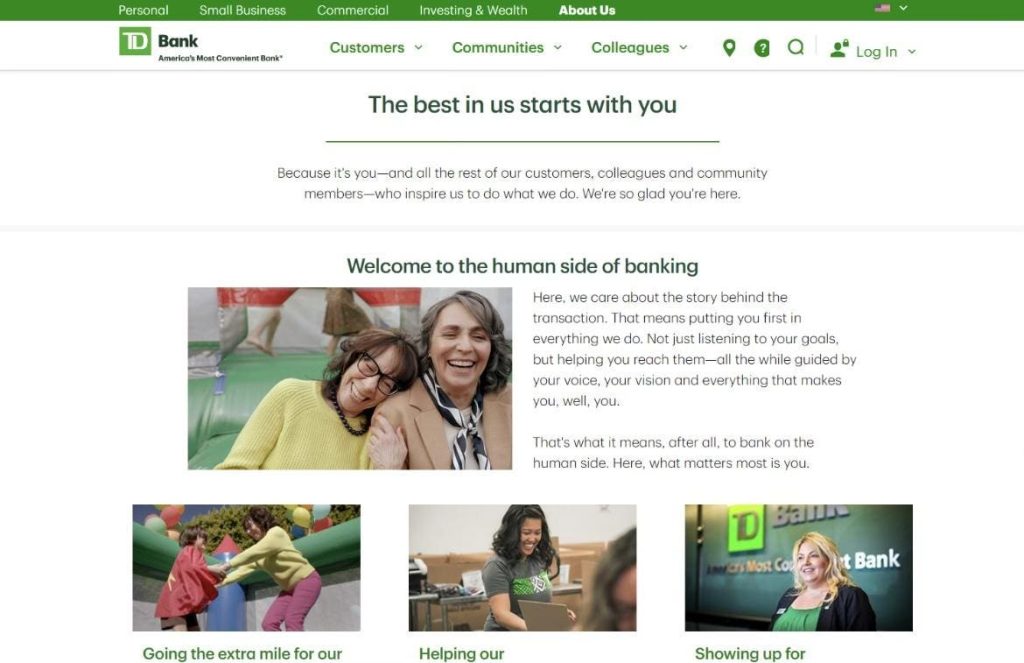In a press release published earlier this week, Toronto-based financial institution TD Bank announced its all-new TD Accessibility Adapter.
The browser extension, which was piloted internally by employees earlier this year, is designed to enable people to personalize their online experience vis-a-vis their accessibility needs and tolerances. The Accessibility Adapter, made free for public use, has been “explicitly designed without using overlays and to co-exist with other assistive technologies, such as standalone screen magnification software.”
The Accessibility Adapter, available now on the Chrome Web Store, was developed by the bank’s eponymous TD Lab, the internal group responsible for collaboration throughout the organization, as a way to make technology more accessible regardless of whether someone has a disability or not. The pilot began with 6,000 employees before ballooning to over 95,000 in June. The Accessibility Adapter is designed to co-exist along other assistive technologies, not be a replacement.
“We’ve had this [vision of] inclusive innovation with a purpose of benefiting our customers and our colleagues [and] all the communities we operate in… it’s been a priority for today from the beginning,” said Samantha Estoesta, product manager for social innovation at TD Bank, in an interview with me in early July. “Looking at the ways that we’ve kind of doubled down into that space when it comes to inclusive innovation, there has some really fantastic stuff that we’ve been doing.”
Most people normally wouldn’t associate accessibility with their financial institution—as a lifelong disabled person, I certainly never have—but Estoesta said accessibility “absolutely” is a high priority at TD Bank. The main reason for this is the company’s institutional embrace of diversity and inclusion; Estoesta told me TD Bank encourages its people to “be their most authentic selves” on the job, and has created a supportive environment in which “everyone can thrive,” she said.
The Accessibility Adapter is but one manifestation of this ethos.
Estoesta explained the Accessibility Adapter came to be in part due to the cognizance of a significant portion of the population coping with disability in some way(s) and thus requiring assistive technology. For Estoesta, the Adapter’s advent is personally meaningful to her insofar as she has disabilities herself—some of which are reflected in the software’s feature set, she said. “We spent the time working on a colleague-first application to really see if we could solve some of those [access] barriers and also address how we think about changing that conversation about doing accommodations or what’s available to you,” Estoesta said.
The eventual decision by the team to open up the tool to everyone, Estoesta told me, stemmed from a strong desire to “increase the accessibility and usability of web properties based on digital devices.”
Estoesta emphasized the Accessibility Adapter isn’t a mere overlay atop another piece of software. The Adapter, she said, is intended for customization extending beyond any legal requirements for accessibility.
In a recent interview with me via videoconference, TD Bank’s head of enterprise innovation Baanu Ratneswaran echoed Estoesta’s sentiments about the company’s organizational stance on accessibility. She called accessibility “something that’s important and critical across the organization,” adding “we fundamentally believe our purpose is to enrich the lives of our customer colleagues and communities.” Innovation vis-a-vis inclusion is a key pillar of TD Bank’s digital work, according to Ratneswaran. Accessibility, she told me, is enthusiastically embraced by everyone throughout TD Bank, from the very top of the organization and running through everyone below it. It’s a core value for the company.
Ratneswaran also seconded Estoesta’s comments about the goal in building the Accessibility Adapter, telling me it truly was created with the intention of helping make colleagues’ work more accessible. She also noted how the tool removes a bureaucratic barrier because it allows people to get the accommodations they need without necessarily submitting a formal request or waiting for managerial approval. In short, not only is the Accessibility Adapter useful at a functional level, it also raises the bar in terms of instilling greater feelings of autonomy and self-esteem because workers can take ownership of their independence. Moreover, Ratneswaran acknowledged the awkwardness of, say, a new employee being forced to have a conversation with their supervisor and perhaps feel pressured to disclose their disability and consequent needs.
All told, these factors ultimately mean the emotional appeal of the Accessibility Adapter matters just as much as the pragmatism behind it.
“That’s been where we’ve really leaned forward from an accessibility perspective—to go beyond what’s necessary in the market and go above to actually deliver for customers and our colleagues,” Ratneswaran said.
In terms of the reception towards the Accessibility Adapter, Estoesta said the feedback has been “overwhelmingly positive.” As a member of the disability community, she called working on the project a “real career highlight” and has been awestruck by all the praise from colleagues. “Anecdotally, I’ve gotten quite a few different responses from individuals that have shared how it has changed the way that they are able to work and the way that they’re able to accommodate themselves using this [tool],” she said. Estoesta added for her own self, using the tool has caused a significant reduction of headaches she experiences.
Looking towards the future, both Estoesta and Ratneswaran expressed optimism around the continuation of TD Bank’s work in the accessibility realm. Estoesta said she is “really proud” and how the teams went about building the Accessibility Adapter, while Ratneswaran told me TD Bank aspires to be a leaser in this space because “it’s just the right thing to do.” Those in the disability community face so many incessant barriers and challenges, she told me, doing this work is just good karmic vibes.
“Ultimately, if you do the right thing, then everything else will follow,” Ratneswaran said. “We’ve seen that in the investments we’ve made.”
Estoesta wholeheartedly concurred.
“I’m excited to see as we continue to build and launch additional products when it comes to emerging technologies, and ensure [other people] also look at those intersections of accessibility,” she said.
Read the full article here










